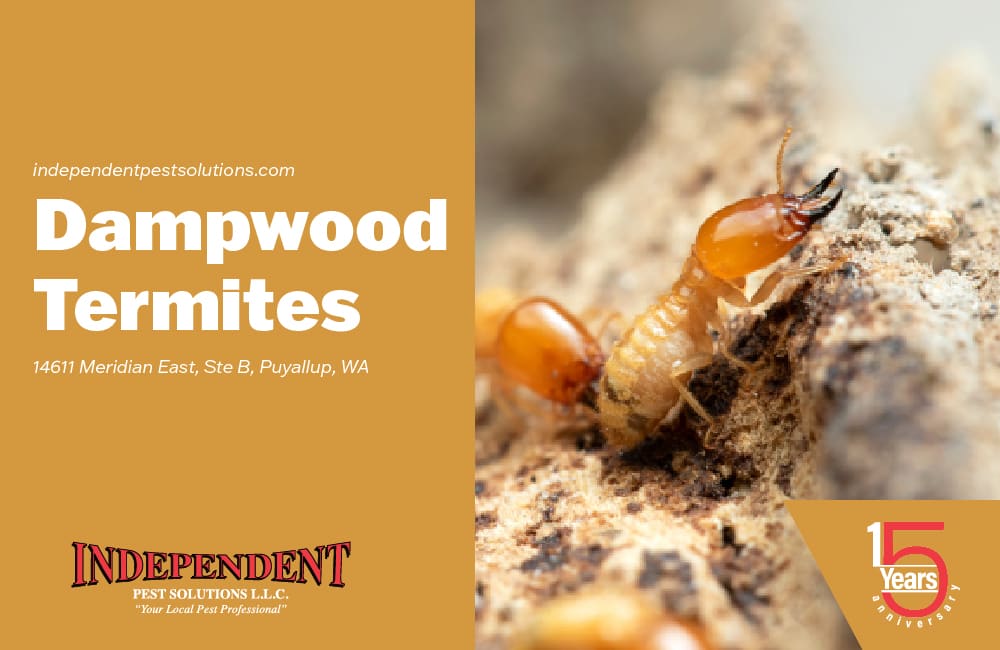Pest Control Services in Puyallup, Washington.
As autumn approaches, the wetter weather can increase the risk of termite infestations. For September, Independent Pest Solution is spotlighting the damp wood termite. In this article, we’ll cover how to identify them, the potential damage they cause, and prevention methods.
Knowing about these termites helps safeguard properties. There are several species in America, but their presence is generally unwanted. These termites are notably larger than their counterparts, like subterranean termites. The damp wood nymphs and soldiers can be between ½ to ¾ inches long. Winged versions, called swarmers, can be up to an inch when including their wings. They have notable physical features like large, flattened, brownish-red heads and long black mandibles.
Their diet primarily consists of wood, eating across its grain and creating smooth-walled tunnels. Unlike some other termites, they don’t mix soil into their galleries. If the wood is very damp, their fecal matter can stick to tunnel walls, which they use to seal off certain areas.
They typically favor damp, decaying wood to establish colonies. It’s rare for them to nest in soil, but they might inhabit ground wood, especially if it’s rotting. Their preference for moisture-rich environments means they’re common in the Pacific Northwest. While they’re distributed throughout America, they often remain hidden from human view.
Dampwood termite colonies start with a pair of swarmers that select suitable wood and nest. These colonies are generally small, but can grow significantly under the right conditions. Unlike ants and bees, they lack a worker caste.

Timely intervention can prevent extensive damage to properties. We provide tailored, evidence-based treatments based on factors like the home’s layout and infestation severity.
The stealthy nature of damp wood termites means they often go unnoticed until significant damage is done. They don’t use mud tubes like other species; instead, they cover entrances with their feces. Wood housing these termites tends to be moist, sometimes leading to mold or fungus. This moisture could be from various sources, and not only does the termite issue need addressing, but also the source of the moisture
Signs of a damp wood termite infestation include hollow-sounding wood when tapped or soft, squishy wood due to their damage. Unlike other termites, they use their waste to maintain humidity within their galleries.
We offer comprehensive inspections and solutions, ensuring not just the elimination of the current problem but also preventive measures against future infestations. Addressing the issue promptly can save both time and money in the long run.

SEND YOUR MESSAGE


